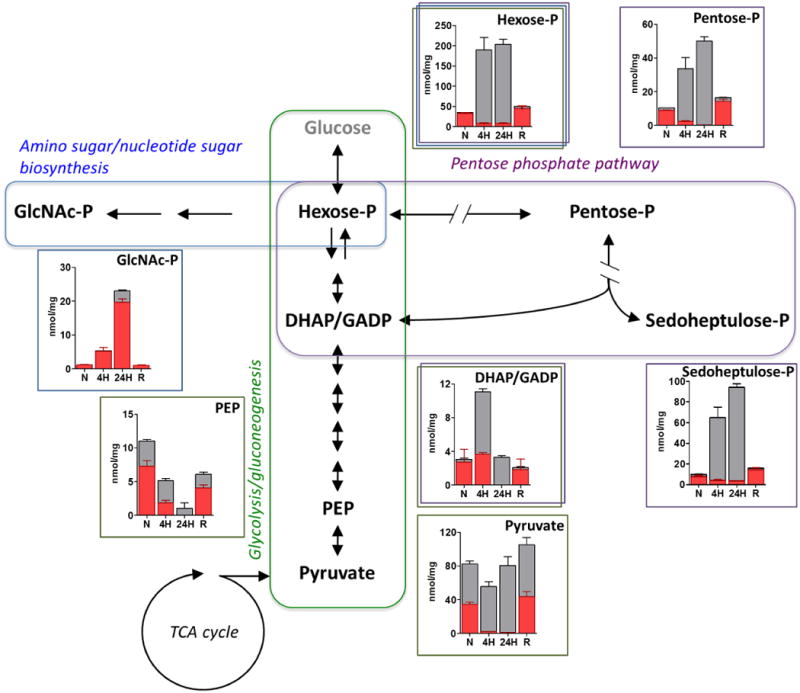Fig 1. Hypoxia induces remodeling of upper glycolysis, amino sugar and nucleotide sugar biosynthesis and pentose phosphate pathways in M. tuberculosis.

Intrabacterial pool sizes (nmol/mg protein) and isotopic labeling of M. tuberculosis intermediates in: upper glycolysis (green box); amino sugar biosynthesis (blue box); and pentose phosphate pathways (purple box), incubated in [U-13C] acetate-containing media for 24 h at 20% O2 (normoxia; N); 4 h (4H) or 24 h (24H) at 1% O2 (hypoxia; H); and 24 h at 20% O2 following pre-incubation at 1% O2/5% CO2 for 24 h (re-aerated; R). Total bar heights indicate relative intrabacterial concentrations (nmol/mg protein), whereas the red area of each bar denotes the enrichment of 13C labeling achieved following transfer to [U-13C] acetate-containing m7H10 media under the condition indicated. All values are the average of three biological replicates (n=3) ±SEM and representative of 2 independent experiments. DHAP, dihydroxyacetone phosphate; GADP, glyceraldehyde phosphate; GlcNAc-P, N-acetyl glucosamine phosphate; hexose-P, glucose-6-phosphate and its isomers; pentose-P, ribose-5-phosphate and its isomers; PEP, phosphoenolpyruvate; sedoheptulose-P, sedoheptulose-7-phosphate and its isomers.
